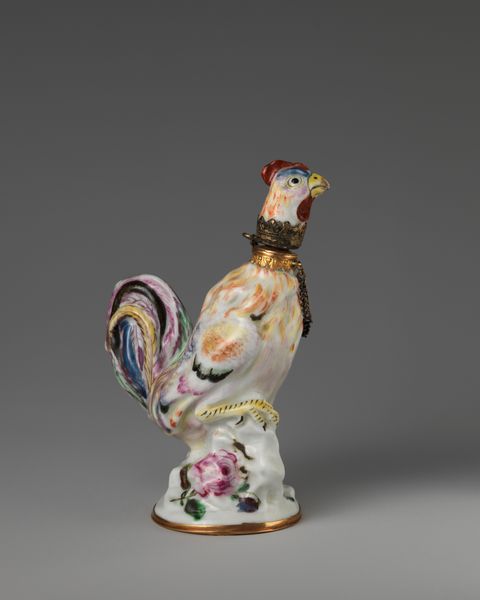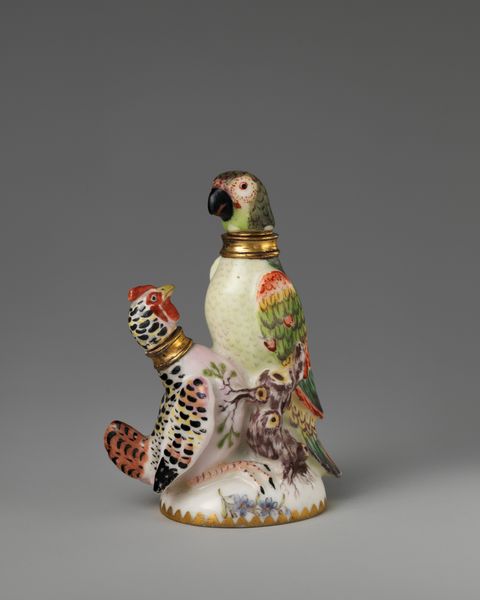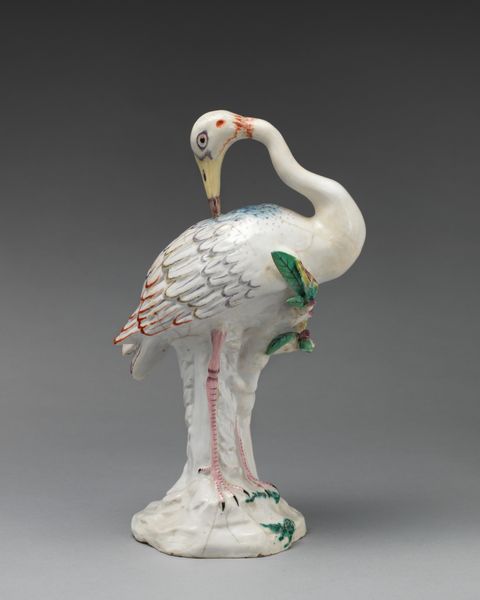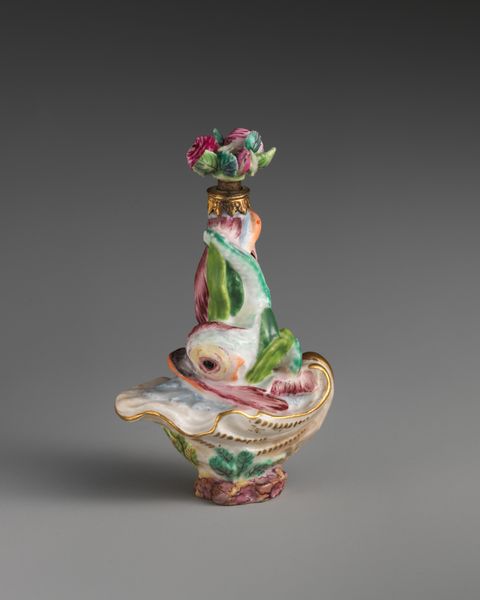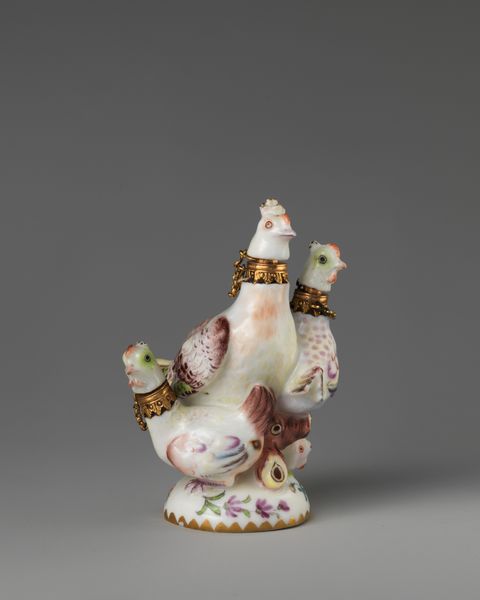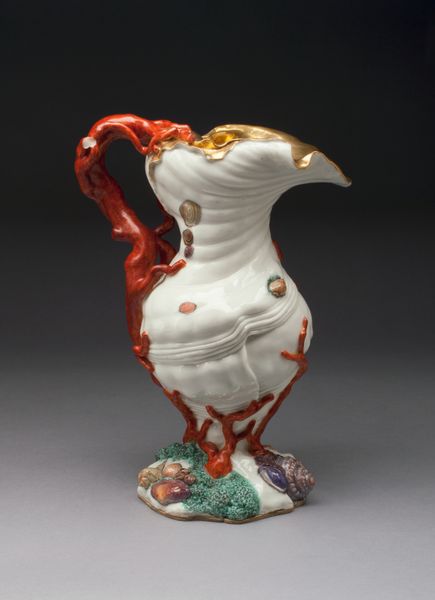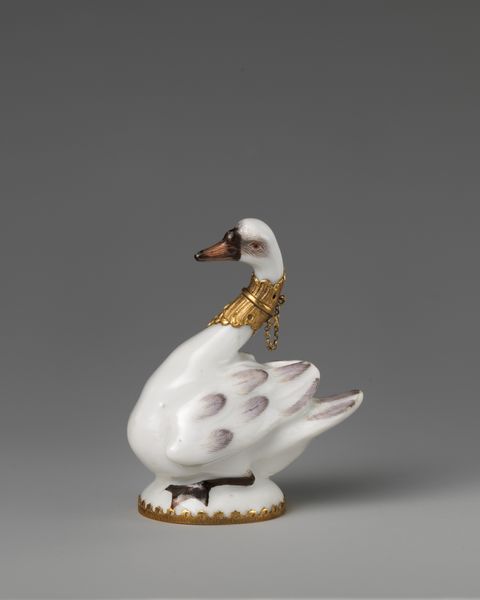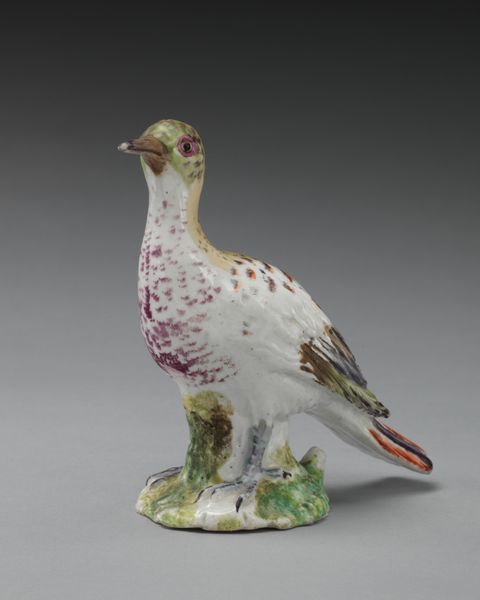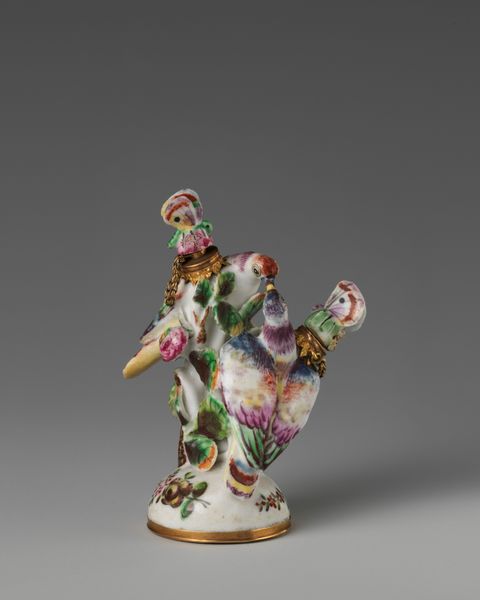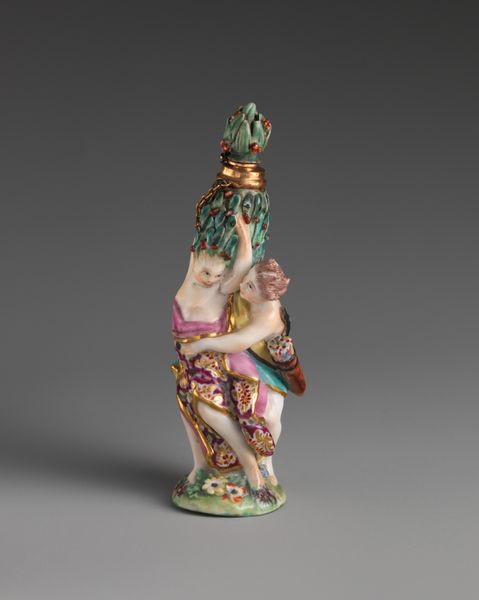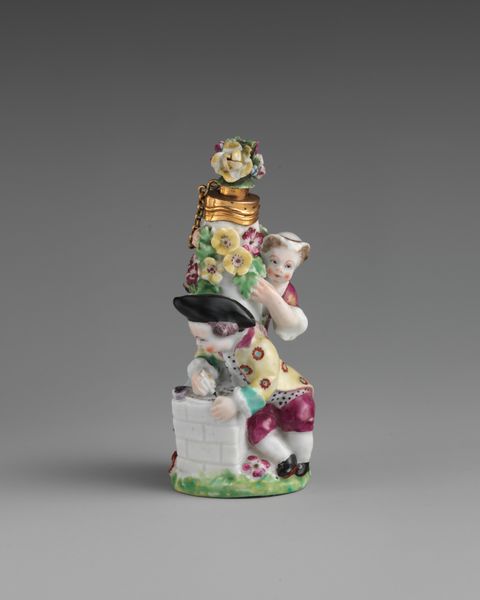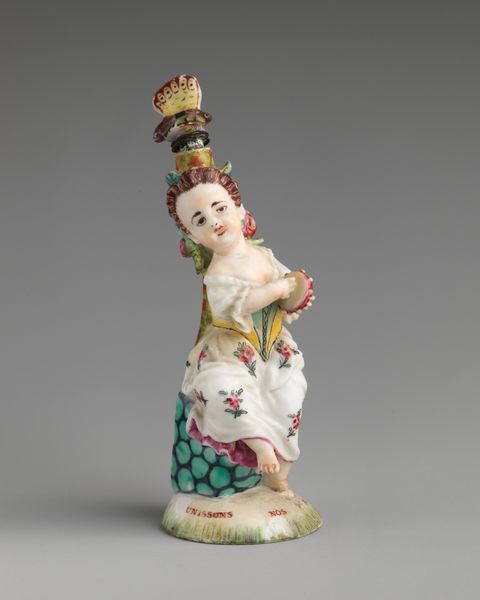
ceramic, porcelain, sculpture
#
animal
#
ceramic
#
bird
#
porcelain
#
figuration
#
sculpture
#
decorative-art
#
rococo
Dimensions: 4 5/16 × 2 in. (11 × 5.1 cm)
Copyright: Public Domain
Editor: So, this is “Fox and stork in a group,” made between 1753 and 1758 by the Chelsea Porcelain Manufactory. It’s porcelain, of course. It has such a strange whimsical feel, almost like a fable in ceramic form. What do you see in this piece? Curator: This sculpture speaks volumes about the societal narratives circulating during the Rococo period. These weren’t just decorative objects, but coded commentaries. Can we really separate aesthetics from the political climate? The seemingly innocent fable you mentioned might reflect tensions between different social classes, slyly critiquing the aristocracy through animal allegory. Notice how the fox seems to be in the ascendant over the stork, challenging traditional hierarchies. Editor: I hadn't thought about it that way. I was focused on the decorative aspects of it. Are you saying that even something this ornamental can carry a critical message? Curator: Absolutely. Think about the materials used - fine porcelain. Porcelain was precious, indicative of luxury and exclusivity. But what message are we decoding by crafting it in a seemingly childish narrative form? Consider how access to certain foods and commodities varied vastly amongst people, in a way that seems akin to the stork’s jar. It points to larger conversations of privilege, accessibility, and perhaps even inequality. How might this have been perceived by those excluded from this elite world? Editor: So the choice of fable, combined with the expensive material, creates a layered critique? A sort of commentary on inequality masked in decorative form? I wonder if that's why the fox looks so smug? Curator: Precisely. By embedding social critique within such luxurious objects, artisans subtly challenged the status quo while simultaneously catering to the tastes of the elite. Editor: This has completely changed how I look at decorative art. I'll definitely need to delve deeper into the social context of Rococo pieces going forward. Curator: It’s about acknowledging that these artworks were never created in a vacuum. There are always societal voices present, even in the seemingly quietest decorative arts.
Comments
No comments
Be the first to comment and join the conversation on the ultimate creative platform.
